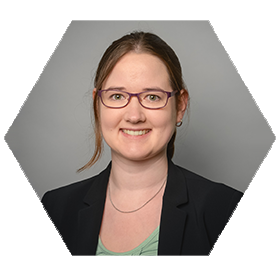The digital pension overview is intended to provide digital and transparent information on the individual old-age provision achieved to date from statutory, occupational and private pension schemes. In Germany, the Central Department for the Digital Pension Overview will take over the technical implementation and a first test phase will start in December 2022. A look at other European countries shows similar project approaches in various stages. The European Commission is planning an ETS (European Tracking Service on Pensions) and is currently consulting EIOPA (European Insurance and Occupational Pensions Authority) on the technical implementation at a national and European level.
Improved information on pension provision
The digital pension overview aims to provide all citizens with reliable, comprehensible and comparable information on the three pillars of old-age provision in digital form. The aim is to enable the population to become better informed and to take care of old-age provision at an early stage, also through occupational and private provision (second and third pillar). The law introducing the Digital Pension Overview (RentÜG) was passed by the Bundestag in November 2020 and since then, the Central Office for the Digital Pension Overview has been working on the technical implementation together with representatives from all three pillars. After a voluntary initial test phase for pension plan sponsors starting in December 2022, mandatory connection of all pension plans is planned for 2024. This means all companies that offer retirement benefits must provide an interface to the Digital Pension Overview.
How do the European neighbors do this?
A look at other European countries shows great diversity both in the pension landscape and in digitalization projects. Due to the comparatively large diversity in the 2nd and 3rd pillars, Germany faces a particular challenge here in terms of digitalization. Some European countries already operate a digital pension overview, including Denmark, Sweden and the Netherlands. Like Germany, other European countries are in the planning or development stage. Germany is therefore in the upper midfield with its digitalization project.
The European Commission states in its Capital Markets Union (CMU) Action Plan that best practice in the area of pensions should be developed to address demographic challenges at both individual and general levels. This means, on the one hand, ensuring an adequate income for each individual in retirement and, on the other hand, maintaining a general financial sustainability. This inevitably leads to the need to promote better understanding and broader engagement in occupational and private pensions.
In order to achieve this not only at national level, but also at European level, the AIEP (European Association of Paritarian Institutions) is currently developing a pilot version of an ETS. This is not intended to replace the national systems, but merely to bring them together on a cross-border basis and thus provide mobile workers with an overview of their pension rights. The VBL (Versorgungsanstalt des Bundes und der Länder) is involved in the implementation on the German side. However, complete mapping is still a long way off, as only six member states are currently mapped with individual elements from the first pillar.
For this reason, the EU Commission also commissioned EIOPA to carry out a technical assessment on the state of development of the national systems and to extract a "best practice" solution. EIOPA, as an agency of the European Union, consequently consulted national institutions. EIOPA's preliminary response can be summarized as "start small, think big". Many member states are at different stages of implementation. There are multiple technical challenges from data management and IT infrastructure to data protection and digital identification that make implementation a project that takes several years and, at best, is implemented in multiple phases. At the same time, the information should be presented in a clear and comprehensible way in order to appeal to a broad section of the population. EIOPA has thus encouraged the European countries to look beyond national borders on the subject of digital pension overviews.
In conclusion, the Digital Pension Overview offers clear benefits both to individuals and to society as a whole. Here you can find out what pension funds you should look out for when looking for suitable software to meet your reporting obligations.
adesso insurance solutions has both the technical and the professional competence to provide a communication component for reporting to the Central Department for Digital Pension Overview. If you would like to learn more, feel free to contact our expert Senthuran Sabaratnam.

